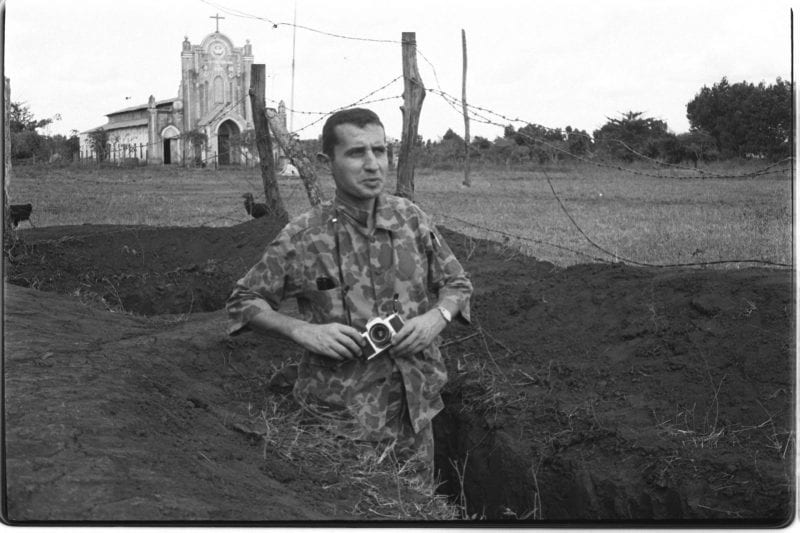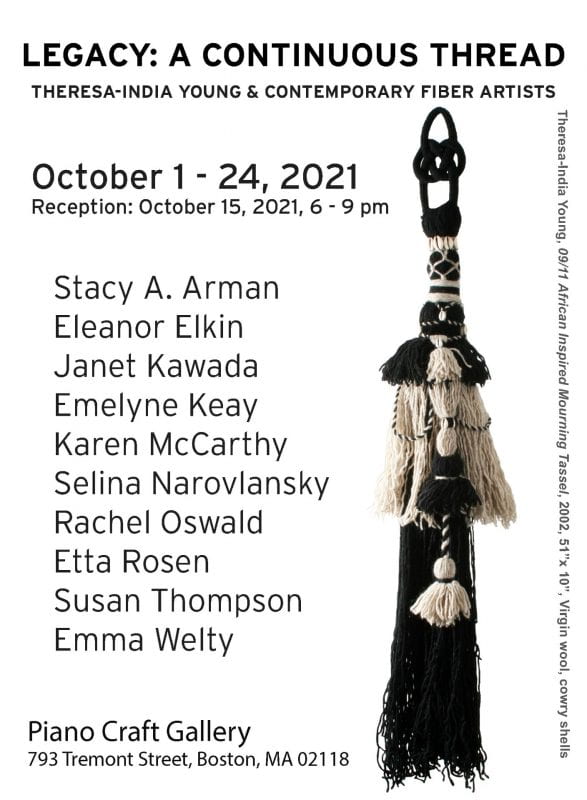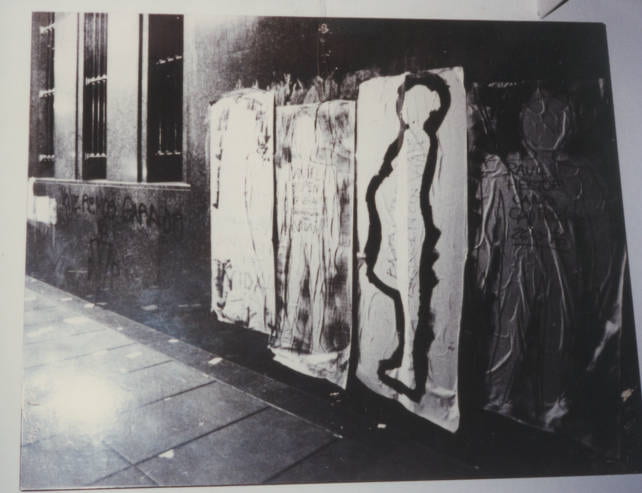The Africana Studies Department and the Joseph P. Healey Library at the University of Massachusetts Boston are pleased to announce the recent acquisition of the Melvin H. King papers, which will be preserved and made publicly available for research by the University Archives and Special Collections Department.

Mel King (center, with fist raised), with his wife Joyce (to his left) and his daughter Pamela (to his right) on the evening of the Boston mayoral primary in 1983, which King won by 98 votes. October 11, 1983. Photo credit: Marilyn Humphries.
Born in 1928 in Boston’s South End neighborhood to immigrants from Guyana and Barbados, Mel King has had a long and significant career as a political activist and community organizer. He graduated from Boston Technical High School in 1946 and earned a B.S. in mathematics from Claflin College in 1950 and an M.A. in education from Boston State College in 1951. King served as the Director of Boys’ Work at Lincoln House, a settlement house in the South End, and as the Director of the New Urban League of Greater
Boston. In 1968, he organized a “Tent City” demonstration in protest of a planned parking garage in the South End. Twenty years later, in 1988, a housing complex was built on that site and dedicated as Tent City. The Archives in the Healey Library holds the records of the Tent City Corporation, as well as other additional papers related to King’s work and activism.
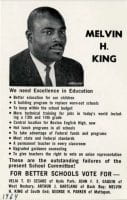
Front of flyer for King’s 1964-1965 election campaign for the Boston School Committee (click image for PDF of flyer)
King worked as an Adjunct Professor of Urban Studies at MIT for twenty-five years, where he founded and served as the Director of the Community Fellows Program in the Department of Urban Studies and Planning. He published a book, Chain of Change: Struggles for Black Community Development, through the South End Press in 1981. King has received honorary doctoral degrees from New England School of Law, University of Massachusetts Amherst, University of Massachusetts Lowell, Boston Architectural College, and University of Massachusetts Boston.
King ran for election to the Boston School Committee in 1961, 1963, and 1965, and served as a State Representative in Massachusetts from 1973-1982. In 1983 he was the first Black mayoral candidate in the City of Boston to make it to the General Election. He founded the Rainbow Coalition Party in Massachusetts, which merged with the Massachusetts Green Party to become the Green-Rainbow Party in 2002.
On behalf of the King family, Rep. King’s daughter, Pamela, said: “Melvin H. King, Sr., Joyce King, and family are pleased to donate the papers and works of Melvin H. King, Community Leader, former State Representative and author to the University of Massachusetts Boston’s Healey Library Archive. Mel received his Masters in Mathematics from Boston State Teacher’s College which was incorporated into the UMass Boston system. He also received an Honorary Doctorate at the recommendation of former Chancellor Keith Motley who had requested to have Mr. King’s papers be placed in the archives at the university. We thank the Africana Studies Department and Professor Jemadari Kamara for assisting with the donation and Andrew Elder of the Archives Department for making the transition of materials to the library. We hope the students, faculty and staff will utilize the collection and add to the growing links in the Chain of Change.”
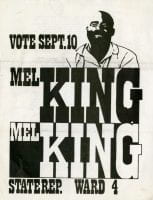
Front of flyer for King’s 1974 reelection campaign for Massachusetts State Representative (click image for PDF of flyer)
“Given UMass Boston’s deep commitment to anti-racism, community engagement and social justice, we are honored to serve as the research home of the Mel King papers,” said Interim Dean of Libraries Joanne Riley. “On behalf of the Healey Library, I would like to express our gratitude to Representative King for donating these materials documenting his phenomenal work and influence, and to his family for helping us organize the smooth transfer of 80 cartons to campus. We are excited about working with faculty and students from Africana Studies and from across campus to prepare the collection to be publicly available for research.”
The Melvin H. King papers comprise 80 boxes of original archival materials documenting King’s lifetime of work as a Boston-based organizer, politician, activist, and educator. Topics include restorative justice, housing, education, agriculture and urban farming, advocacy for formerly incarcerated people, and computer literacy training. Among the materials in the collection are articles, audiovisual materials, books, correspondence, journals and notebooks, magazines, newspapers and newsletters, pamphlets and flyers, photographs and slides, poetry, reports, speeches and campaign materials, and various ephemera. Additional materials related specifically to King’s mayoral campaign in the early 1980s are housed in the Archives at Roxbury Community College.
This acquisition was made possible by Dr. Jemadari Kamara and Dr. Tony Van Der Meer in UMass Boston’s Africana Studies Department.
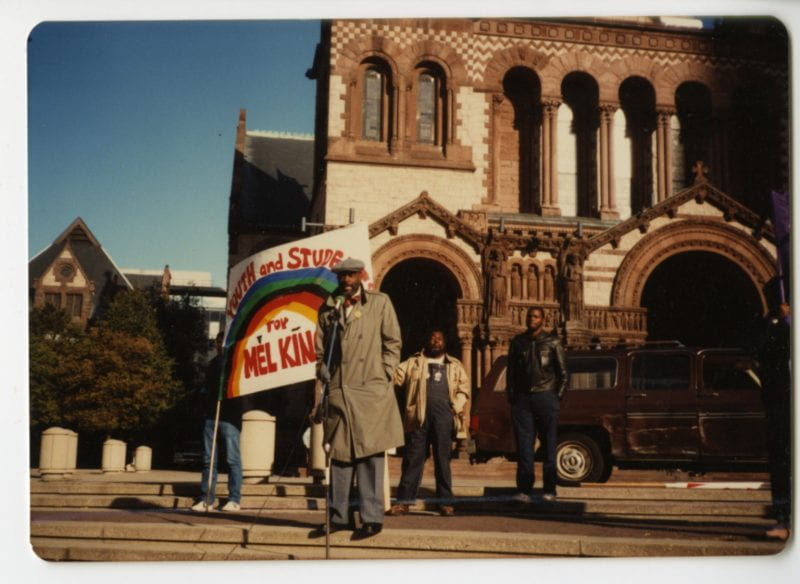
Boston mayoral candidate Mel King speaking at a rally in Copley Square in October 1983.
For more information about the Melvin H. King papers, including updates on when the collection will be available for research, please visit blogs.umb.edu/archives or contact library.archives@umb.edu.
University Archives & Special Collections in the Joseph P. Healey Library at UMass Boston was established in 1981 as a repository to collect archival material in subject areas of interest to the university, as well as the records of the university itself. The mission and history of UMass Boston guide the collection policies of University Archives & Special Collections, with the university’s urban mission and strong support of community service reflected in the records of and related to urban planning, social welfare, social action, alternative movements, community organizations, war and social consequence, and local history related to neighboring communities. To learn more, visit blogs.umb.edu/archives.
